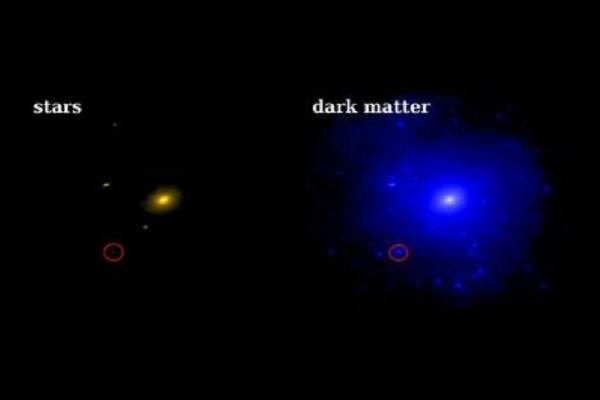
PASADENA, Calif., Nov. 20 (UPI) ─ Dark matter can’t be seen. Its existence must be intimated by the behavior of visible matter within the realm of the dark matter’s influence.
Recently, astronomers at Caltech conducted the difficult work of weighing a small, dimly lit galaxy drifting along the outskirts of the Milky Way. Their numbers suggest the dwarf galaxy, dubbed Triangulum II, is chock full of dark stuff.
“The galaxy is challenging to look at,” lead researcher Evan Kirby, an assistant profess of astronomy at Caltech, said in a news release. “Only six of its stars were luminous enough to see with the Keck telescope.”
By measuring the velocity of those six stars, Kirby was able to gauge the gravitational influence of the galaxy’s dark matter. The findings were published this week in the Astrophysical Journal.
“The total mass I measured was much, much greater than the mass of the total number of stars ─ implying that there’s a ton of densely packed dark matter contributing to the total mass,” Kirby explained. “The ratio of dark matter to luminous matter is the highest of any galaxy we know. After I had made my measurements, I was just thinking ─ wow.”
One of the chief aims of astrophysicists is to measure dark matter directly. Researchers have found all sorts of ways to indirectly prove and measure the existence of dark matter. Many headlines announcing such findings falsely claim “direct evidence of dark matter” and “dark matter measured directly.”
Dark matter experts believe direct measurement is possible, however, and Kirby thinks Triangulum II may be an ideal place to try.
Dark matter theorists hypothesize dark matter particles called supersymmetric WIMPs (weakly interacting massive particles) are colliding all over the universe. When they do, they produce gamma rays. So far, these gamma rays have been extremely hard to find.
But in addition to being full of dark matter, Triangulum II also hosts very little of the type of stellar activity that makes seeing gamma rays so hard ─ stars being born, gas and dust swirling around, supernovas exploding.
Before astronomers can go looking for dark matter-propelled gamma rays, Kirby needs to confirm the accuracy of his most recent measurements. A group of scientists in France found the galaxy’s outer stars to be moving faster than those in the center. Such an anomaly would suggest the galaxy is in the process of being ripped apart by the Milky Way.
“My next steps are to make measurements to confirm that other group’s findings,” Kirby said. “If it turns out that those outer stars aren’t actually moving faster than the inner ones, then the galaxy could be in what’s called dynamic equilibrium. That would make it the most excellent candidate for detecting dark matter with gamma rays.”






